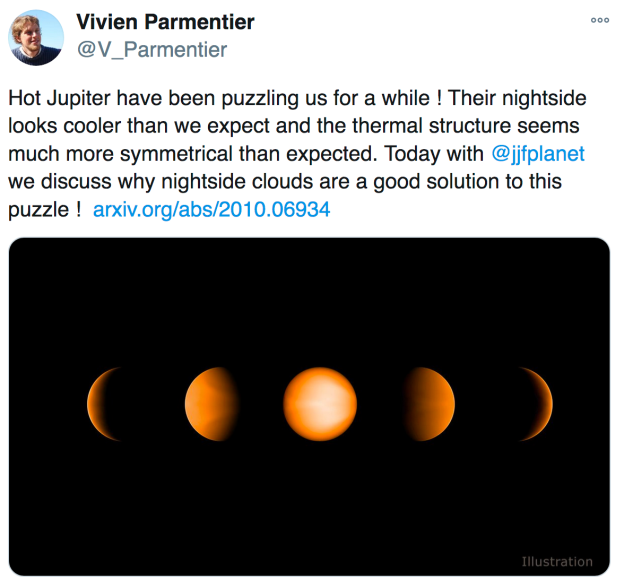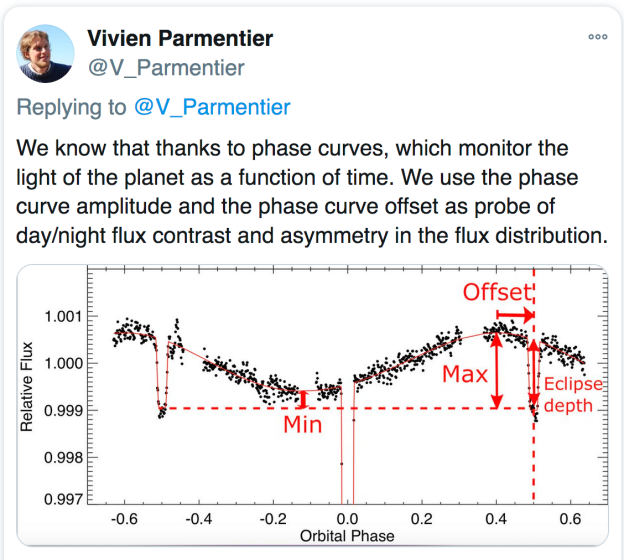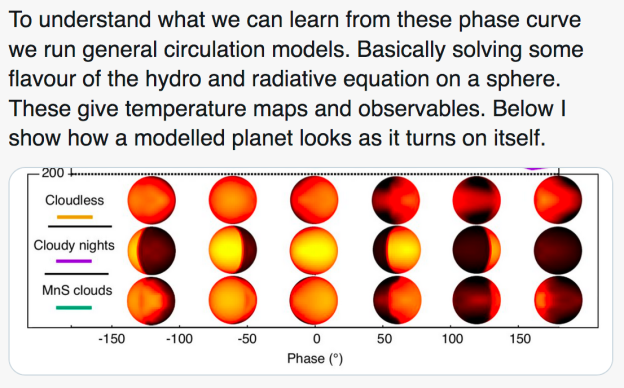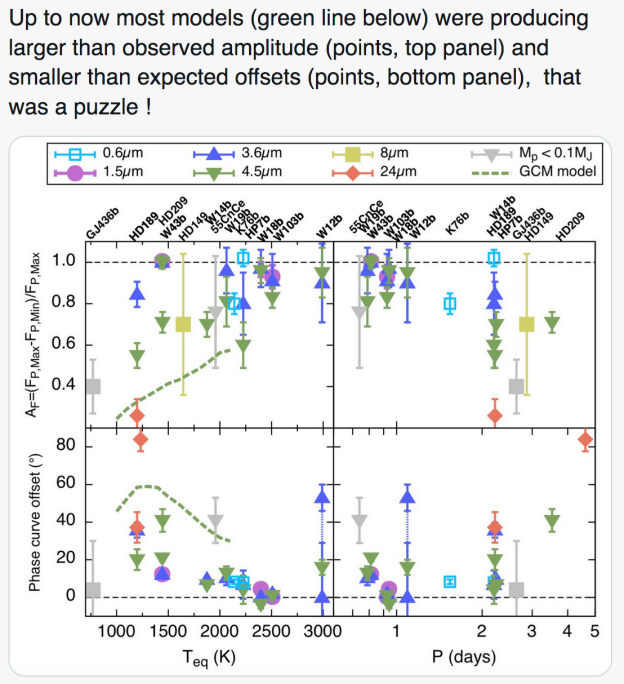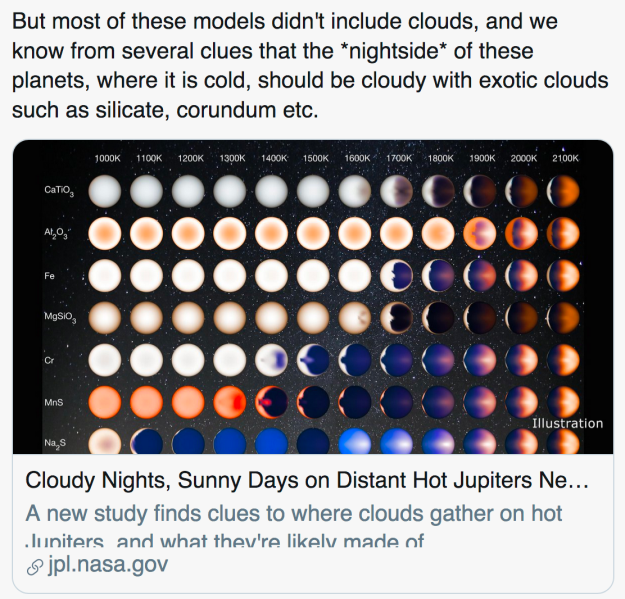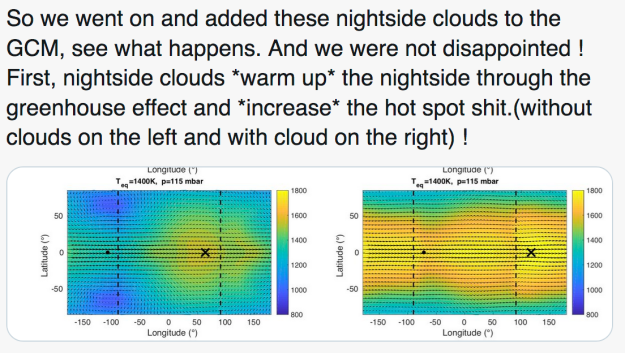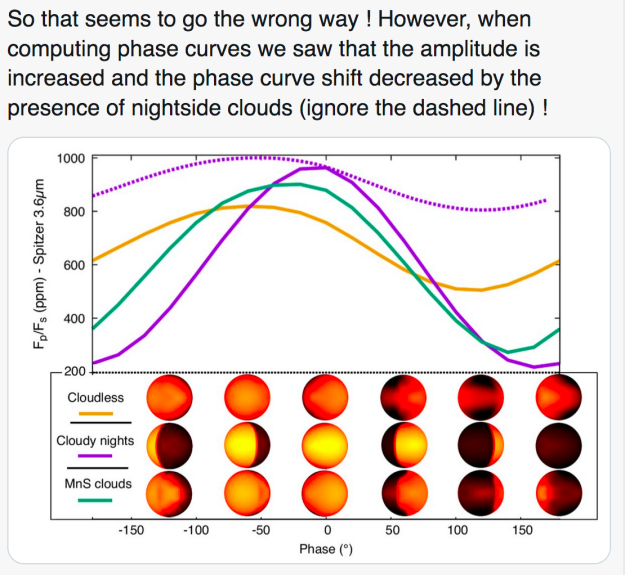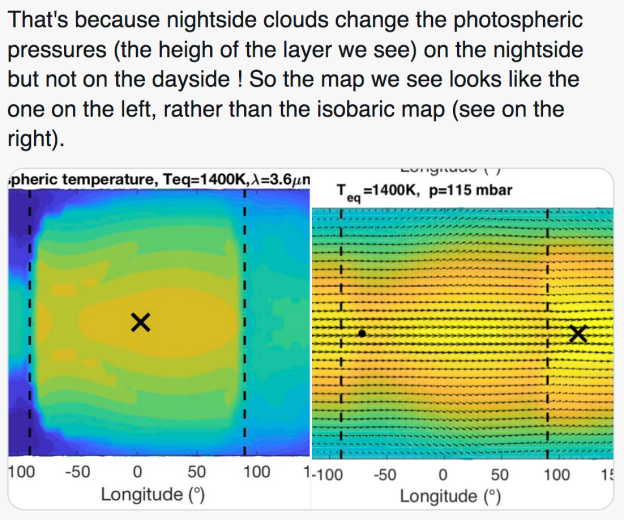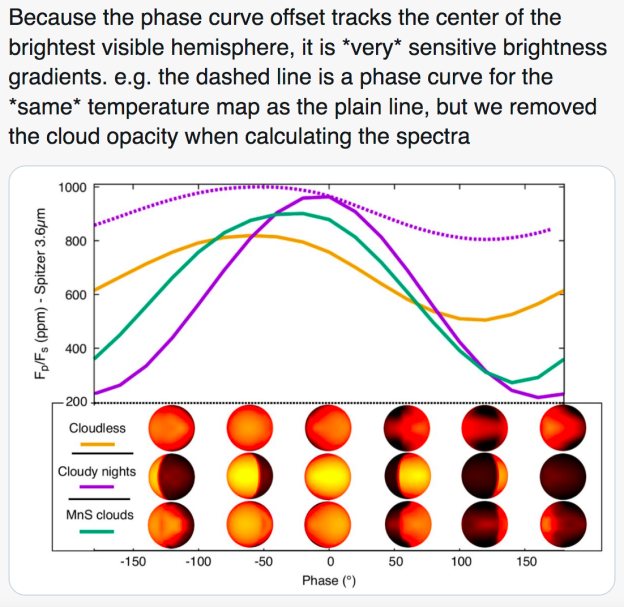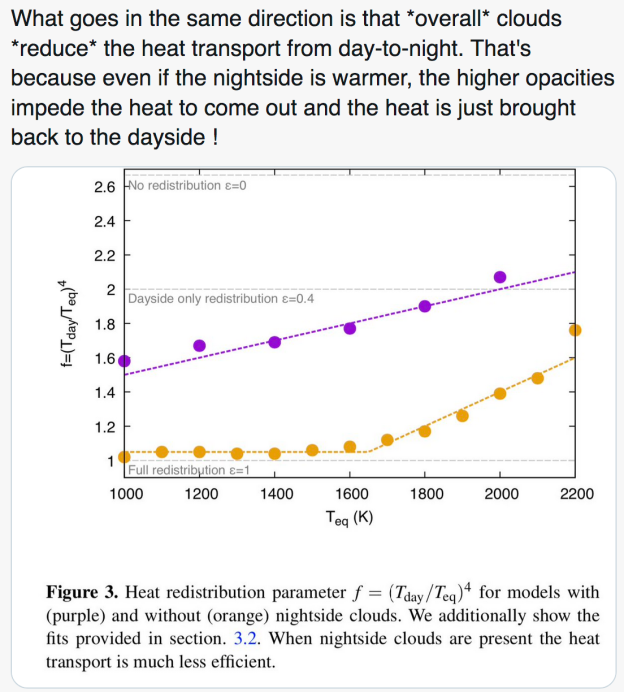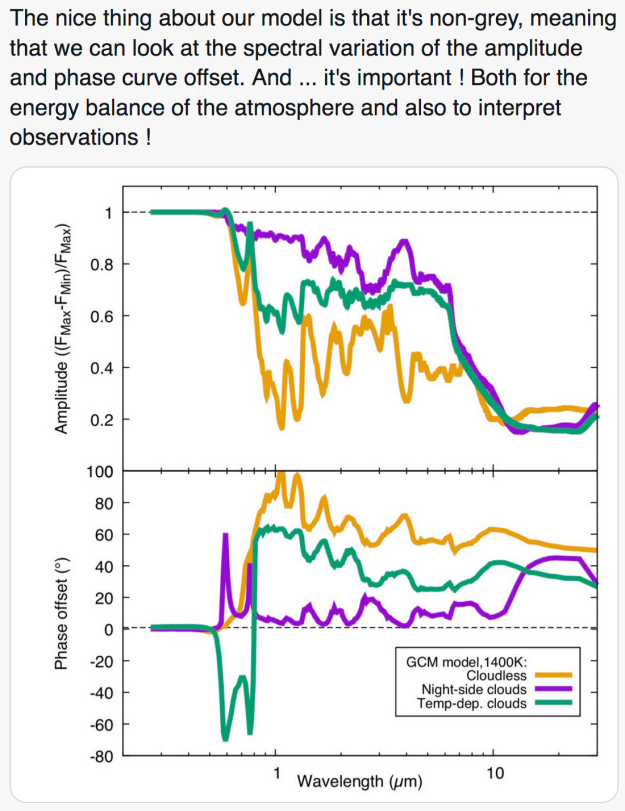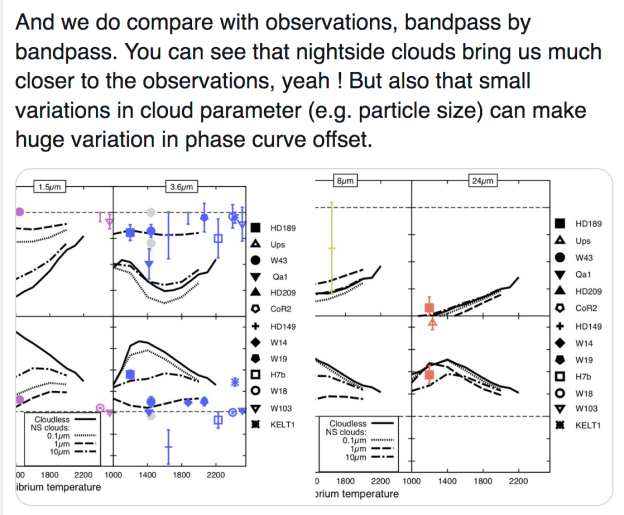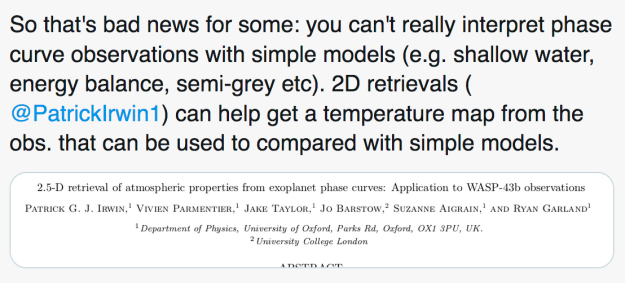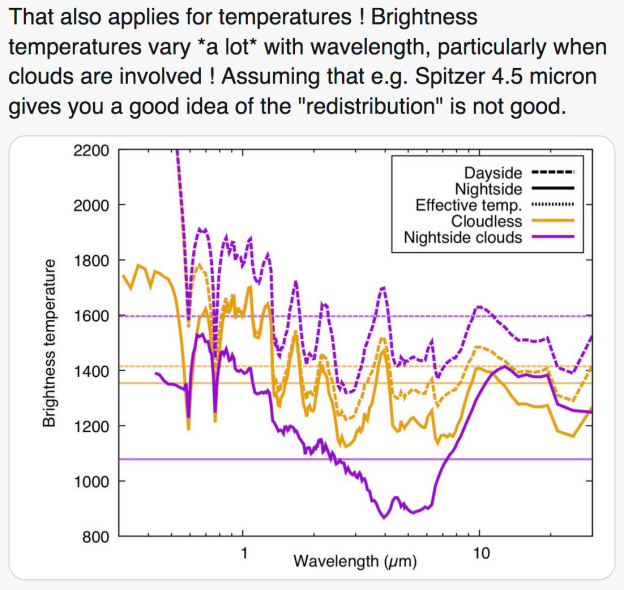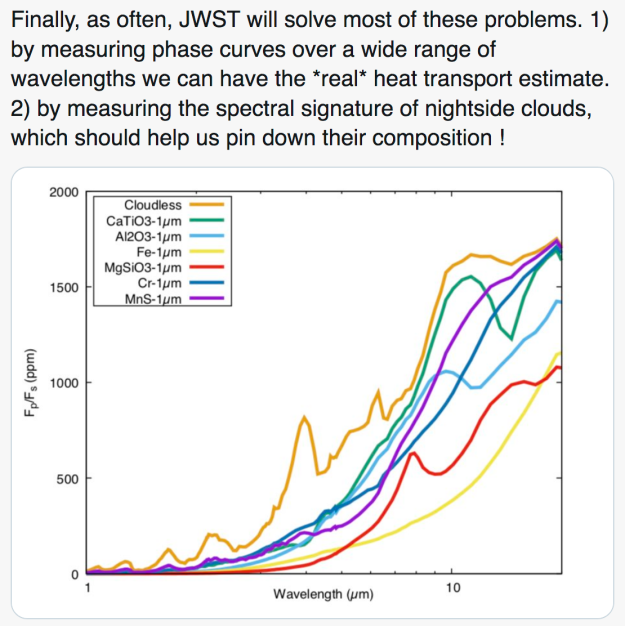NASA JPL have put out a press release about ultra-hot Jupiters including WASP-18b, WASP-103b and WASP-121b.
The work, led by Vivien Parmentier, used the Spitzer and Hubble space telescopes to study how the planets’ atmospheres change from the irradiated day side to the cooler night side.
“Due to strong irradiation on the planet’s daysides, temperatures there get so intense that water molecules are completely torn apart. […] fierce winds may blow the sundered water molecules into the planets’ nightside hemispheres. On the cooler, dark side of the planet, the atoms can recombine into molecules and condense into clouds, all before drifting back into the dayside to be splintered again.”

Simulated views of the ultrahot Jupiter WASP-121b show what the planet might look like to the human eye from five different vantage points, illuminated to different degrees by its parent star. (Credit: NASA/JPL-Caltech/Vivien Parmentier/Aix-Marseille University)
“With these studies, we are bringing some of the century-old knowledge gained from studying the astrophysics of stars, to the new field of investigating exoplanetary atmospheres,” said Parmentier.
Harvard’s CfA have also produced a press release on the work, focusing on the analysis of WASP-103b led by Laura Kreidberg.
“A crucial observational advance by Kreidberg and her team was that they observed the planet for an entire orbit, enabling them to map the climate at every longitude and derive detailed information about the temperatures on the planet’s dayside and nightside. This is only the second time that such a complete exoplanet observation has been performed with HST.”
